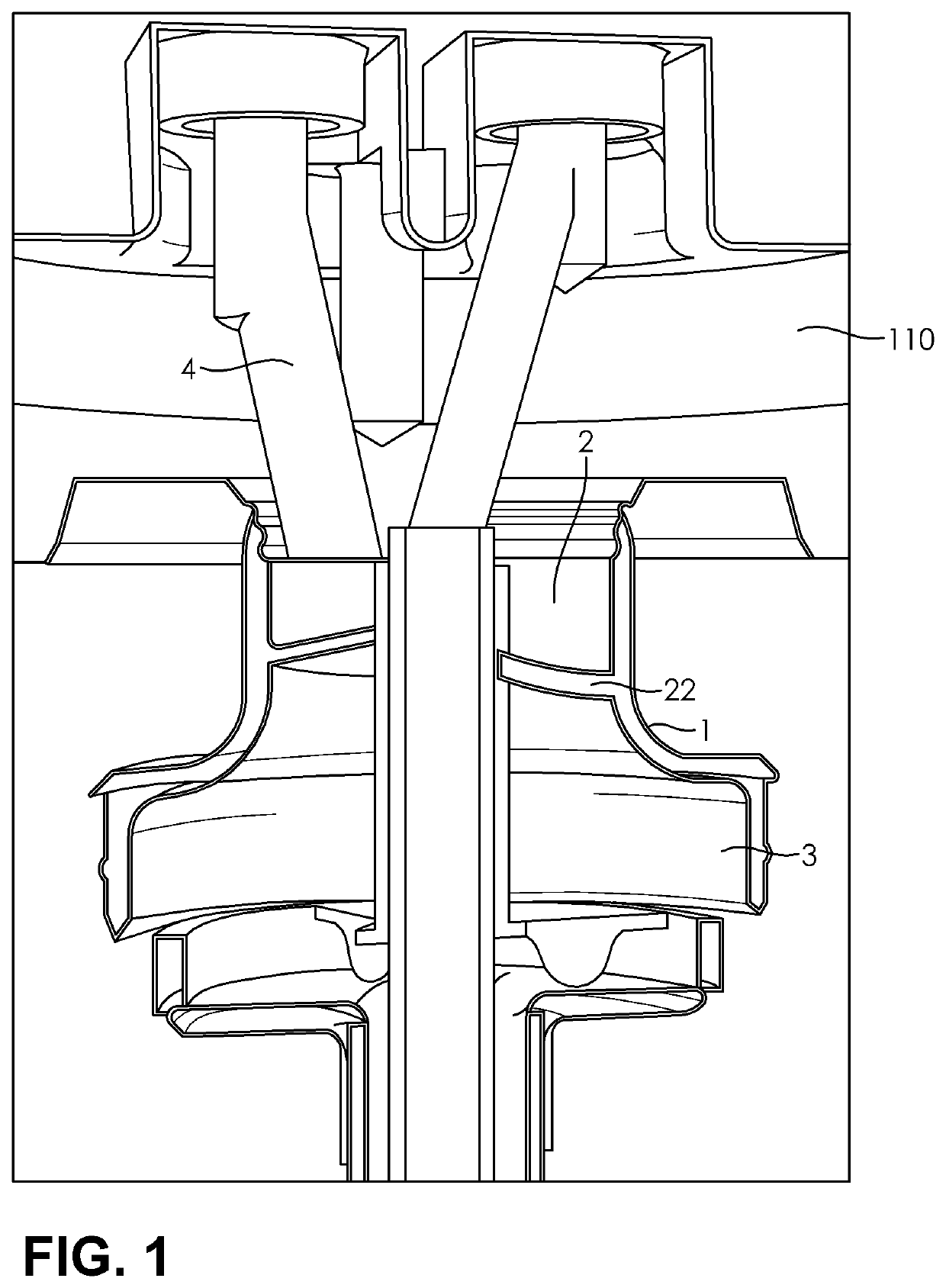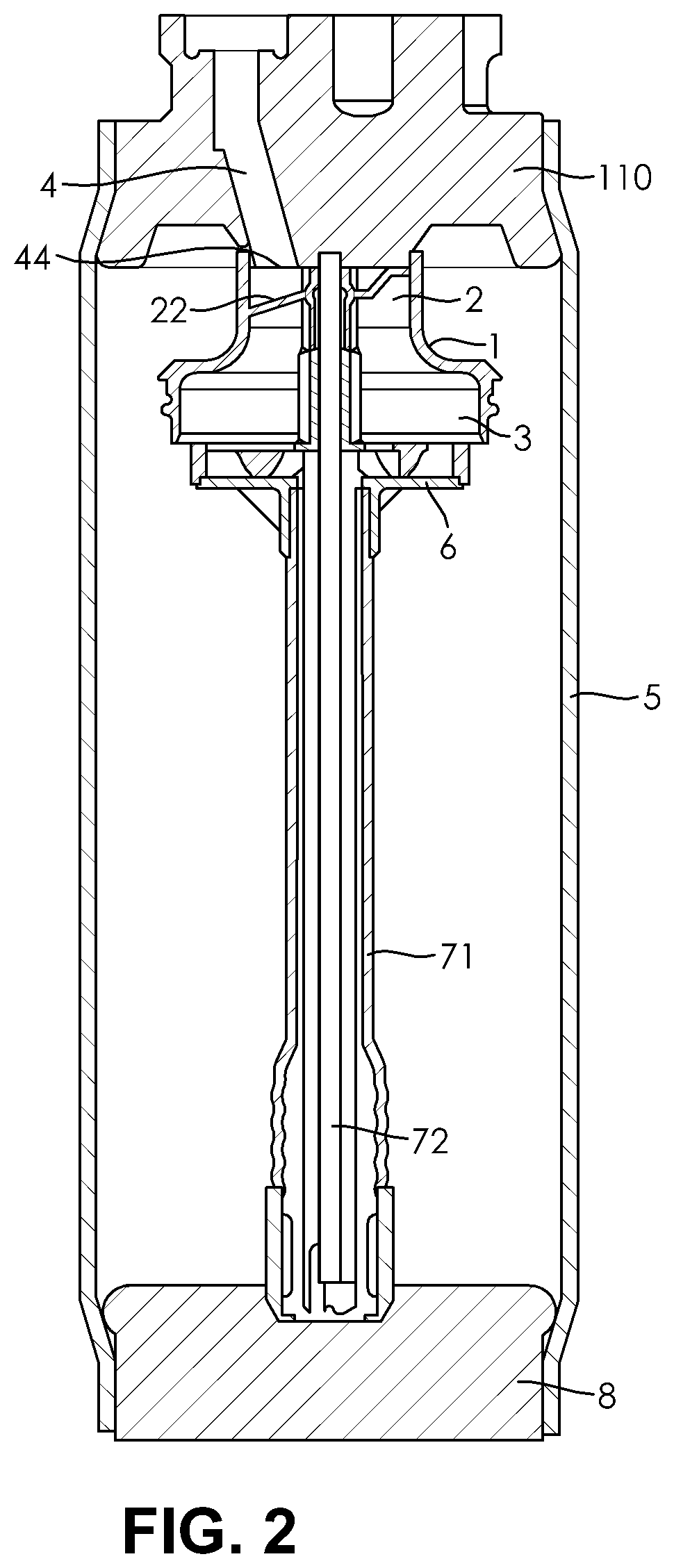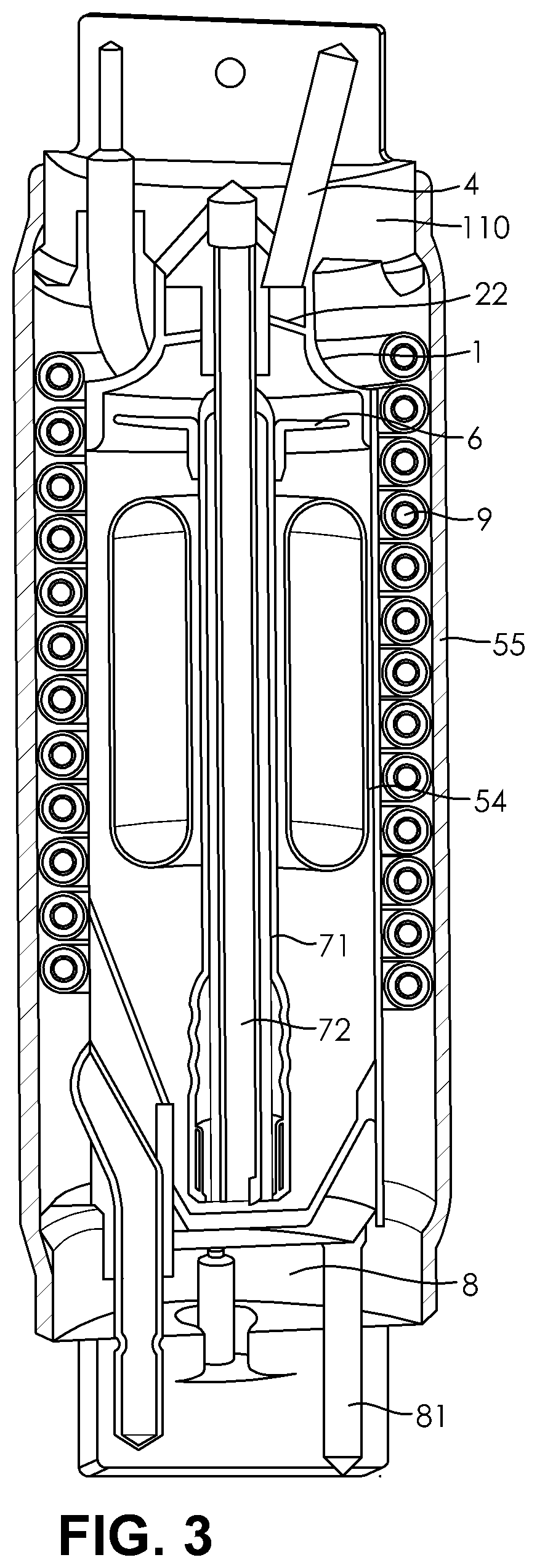Cyclone for separation of gas-liquid mixture, and a refrigerant accumulator containing this cyclone
a gas-liquid mixture and cyclone technology, which is applied in the direction of separation processes, vortex flow apparatus, lighting and heating apparatus, etc., can solve the problems of insufficient separation of r744 refrigerant, insufficient separation of components, and increased risk of damage to tangentially oriented inlet pipes, etc., to achieve the effect of reducing the efficiency of separating components and facilitating and cost-effective production
- Summary
- Abstract
- Description
- Claims
- Application Information
AI Technical Summary
Benefits of technology
Problems solved by technology
Method used
Image
Examples
example 1
[0029]FIG. 1 shows a cyclone with an axial inlet and a lid 110 of the accumulator for separating the liquid and gaseous components from the inlet mixture of the liquid and gaseous components. The cyclone comprises a cyclone body 1 with one stationary vane 22 in the form of a helix for causing the rotational movement of the inlet mixture, a cylindrical inlet chamber 2, and an outlet chamber 3 which widens gradually from the outlet of the vane 22.
[0030]The cyclone is fitted on the lid 110 of the accumulator of heat exchange medium, and the inlet bore 4 in the lid 110 opens axially to the inlet chamber 2 substantially in the direction of the cyclone axis. The vane 22 in the form of a helix changes the direction of mixture flow so that the outlet at the end of the vane 22 transfers the mixture tangentially to the outlet chamber 3, in which part the mixture is already rotating and the separation of the liquid particles from the gas begins.
[0031]Cyclone is usually made of plastic by injec...
example 2
[0032]FIG. 2 shows a refrigerant accumulator that contains a vessel comprising a lid 110, a bottom 8, and a shell 5, wherein the lid 110 is coaxially connected to the cyclone of the present invention. In the lid, there is an inlet bore 4 passing through the lid substantially coaxially with the axis of the lid 110 and cyclone. The inlet bore 4 brings the mixture of liquid and gas through the axial inlet 44 to the inlet chamber 2 of the cyclone. An assembly of suction pipes 71, 72 passes between the lid 110 and the bottom 8 of the vessel to pipe away the gaseous refrigerant component. A deflector 6 is situated behind the cyclone outlet chamber 3, wherein the means for enriching the gaseous refrigerant with a pre-determined amount of oil are situated at the bottom 8 of the vessel (such means are disclosed, for example, in US 2015 / 0345844). The assembly of suction pipes 71, 72 to pipe away the gaseous refrigerant component comprises an outer suction pipe 71 for piping away the gaseous r...
example 3
[0034]FIG. 3 shows an accumulator with integrated internal heat exchanger that contains an outer vessel comprising a lid 110, a bottom 8, and a shell 55, and an inner vessel 54, wherein the lid 110 is coaxially connected to the cyclone of the present invention. The gas-liquid mixture passes through the lid 110 through a bore 4 substantially coaxially with the axis of the lid 110 and cyclone and axially enters the inlet chamber of the cyclone body 1; between the vessel lid 110 and bottom 8, an assembly of suction pipes 71, 72 passes to pipe away the gaseous refrigerant component; a deflector 6 is located behind the cyclone outlet chamber in the inner vessel 54. In the bottom of the inner vessel 54 there are means for enriching the gaseous refrigerant with a pre-determined amount of oil. A heat exchanger in the form of a helically guided tube 9 is provided between the outer wall of the inner vessel 54 and the inner wall of the shell 55 of the outer vessel through which the refrigerant...
PUM
| Property | Measurement | Unit |
|---|---|---|
| shape | aaaaa | aaaaa |
| diameter | aaaaa | aaaaa |
| pressure | aaaaa | aaaaa |
Abstract
Description
Claims
Application Information
 Login to View More
Login to View More - R&D
- Intellectual Property
- Life Sciences
- Materials
- Tech Scout
- Unparalleled Data Quality
- Higher Quality Content
- 60% Fewer Hallucinations
Browse by: Latest US Patents, China's latest patents, Technical Efficacy Thesaurus, Application Domain, Technology Topic, Popular Technical Reports.
© 2025 PatSnap. All rights reserved.Legal|Privacy policy|Modern Slavery Act Transparency Statement|Sitemap|About US| Contact US: help@patsnap.com



